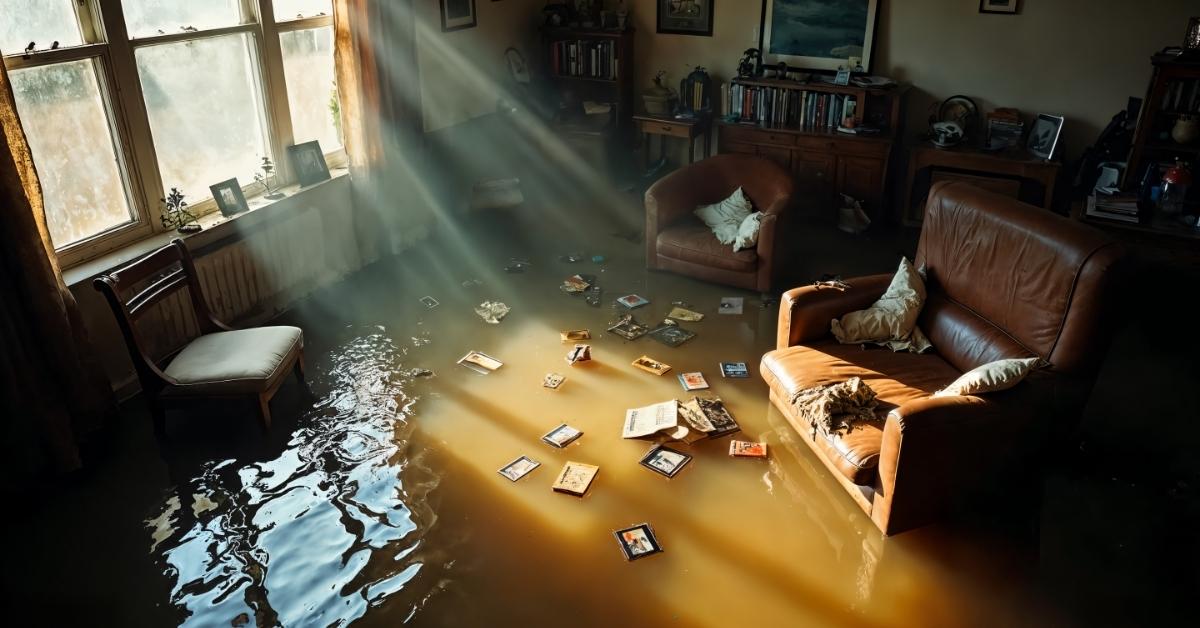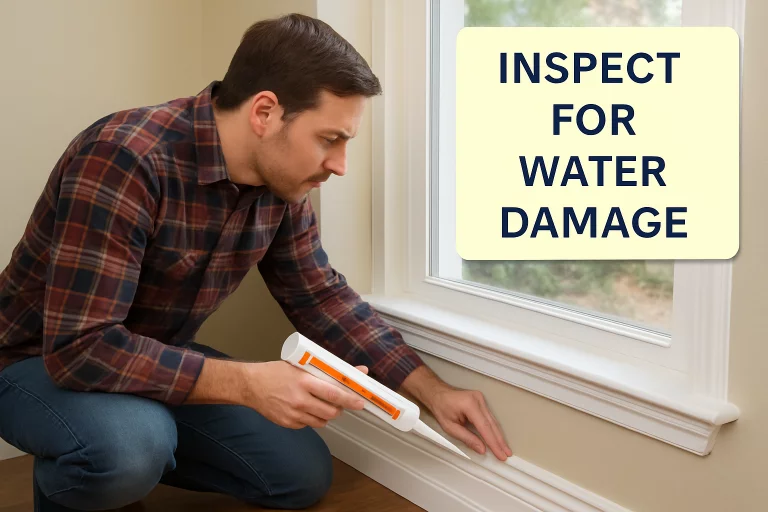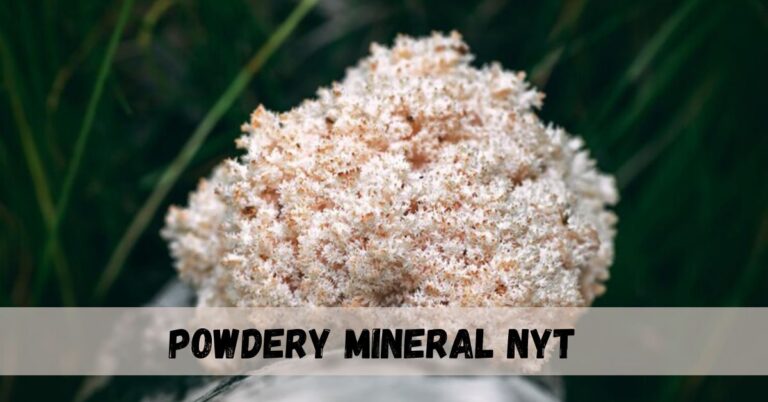Preventing and Recovering from Water Damage at Home

Key Takeaways
- Maintaining your home’s exterior and interior systems is critical to reducing water damage risks and saving money.
- Immediate and decisive action after a water incident helps minimize long-term consequences and the spread of mold.
- Engaging a professional restoration service is vital for significant or hidden water damage to ensure your home is thoroughly repaired and healthy.
Water damage can strike when you least expect it, wreaking havoc on your home’s structure and threatening your cherished possessions. Incidents such as heavy rainfall, flooding, burst pipes, or even slow and undetected leaks can all lead to costly repairs and health concerns. As a homeowner, understanding the best strategies to prevent and address water damage can mean the difference between a minor inconvenience and a significant, disruptive event. Rapid action is often critical to minimizing lasting harm. For cases involving extensive destruction, consulting with a reputable restoration company Denver ensures your property is restored thoroughly, safely, and efficiently, protecting both your home and your family’s well-being.
Preventive action does more than just cut down the potential for future repairs; it helps preserve your home’s value and contributes to a safe, comfortable living environment. Water intrusions are a leading cause of costly homeowner claims, but by adopting a vigilant approach and being prepared to respond decisively, you can substantially reduce your risk. The guidance below outlines actionable steps for maintaining a water-tight home, how to react when incidents do occur, and when it’s time to enlist the expertise of professionals.
Preventive Measures to Safeguard Your Home
Maintain Your Roof and Gutters
The roof and gutter system form the primary barrier between your living space and unpredictable weather elements. Over time, harsh conditions, falling branches, and seasonal debris can create vulnerable spots or blockages. Even a few missing shingles can allow water to seep in, eventually causing rot, sagging ceilings, or even interior mold. To prevent such issues, schedule a comprehensive inspection of the roof at least once a year and after any major storm. Address any damage—such as curling, cracking, or missing shingles—without delay. Gutters and downspouts, if clogged with leaves and dirt, will fail to divert rainwater away from the foundation, increasing the chances of basement leaks and soil erosion around your home. Clean gutters at least twice a year, and consider adding gutter guards if trees are nearby.
- Inspect Annually: Schedule visual checks of the entire roofing system for early signs of wear, especially near joints and chimneys.
- Clean Gutters and Downspouts: Clear blockages regularly and confirm that water flows freely away from the home’s perimeter.
Seal Windows and Doors
Windows and doors are common weak points where water can sneak in, especially if seals and caulking have deteriorated. Fluctuations in temperature and age can shrink or crack weatherstripping and caulking, creating gaps that let rain come through during storms or when snow begins to melt. Install new weatherstripping on all windows and doors, and replace or refresh caulking around frames annually. Pay special attention to basement windows or sliding glass doors, which are frequently exposed to puddling water. Ensuring a tight seal will not only prevent water infiltration but can also improve home energy efficiency and comfort.
- Apply Weatherstripping: Choose durable, high-quality materials and replace old or compressed strips to ensure a complete seal.
- Inspect Caulking: Remove and replace cracked or missing caulk, focusing on areas with visible sunlight or drafts.

Monitor and Maintain Plumbing Systems
Hidden leaks in your plumbing supply or drain lines are among the most insidious causes of water damage. Such leaks can erode supports, ruin insulation, and foster toxic mold growth for months before they are noticed. Set reminders to check under sinks, around your water heater, and behind your washing machine for drips, rust, or moisture. Flexible hoses used for dishwashers and washing machines can become brittle and fail over time—replace them every 5 years or at the first sign of trouble. Maintaining optimal water pressure is another key step, as high pressure can rupture pipes or fittings. Install a pressure regulator if needed, and schedule periodic inspections with a licensed plumber.
- Inspect Pipes and Hoses: Run your hand along pipes to feel for condensation, and look closely for water stains on walls or floors.
- Monitor Water Pressure: Use a gauge to keep water pressure between 40 and 60 psi to prevent strain on plumbing.
Install Water Detection Devices
Today’s smart home technology makes water leak detection easier and more cost-effective than ever. Compact sensors can be placed beside water heaters, under sinks, behind toilets, and near major appliances, immediately alerting you to leaks. Advanced smart leak detectors connect directly to your Wi-Fi, sending instant notifications to your smartphone, even if you’re away. Early leak detection can save thousands in repair costs and protect irreplaceable items. As an added safety net, consider an automated shut-off valve that cuts the water supply at the first sign of a leak. For homeowners who want to expand their water safety knowledge, organizations like the American Red Cross provide comprehensive guides for preparing and responding to home floods.
- Place Sensors Strategically: Install them in areas most prone to leaks, such as behind appliances, under sinks, and in utility rooms.
- Consider Smart Leak Detectors: Leverage technology to receive real-time alerts wherever you are.
Immediate Steps to Take After Water Damage
Ensure Safety First
Water and electricity never mix—your very first step should be ensuring that the affected area is safe. If standing water is present near outlets, switches, or appliances, switch off power at the main breaker before entry. Floodwater or backed-up sewer water can contain dangerous contaminants, ranging from bacteria to harmful chemicals. Always wear waterproof boots, gloves, and a mask or respirator when working in high-risk areas. For substantial flooding or when unsure of safety, evacuate and contact professionals before reentering the property.
- Turn Off Electricity: Safety is paramount—ensure all power sources are deactivated before starting cleanup.
- Avoid Contaminated Water: Minimize exposure by using appropriate safety gear and avoiding direct skin contact whenever possible.
Document the Damage
Comprehensive documentation is essential to smooth insurance claims and hassle-free restoration. Use your phone or camera to create a visual record of every area and item impacted by the water event. Close-up shots of damaged floors, walls, furniture, and electronics can provide crucial details. As you compile your inventory, list the make, model, and estimated value of each item, and note receipts or proof of purchase when possible. This organized documentation will ease communication with your insurance adjuster and speed up claim approval.
- Take Photos and Videos: Document everything, from watermarks on ceilings to ruined rugs and electronics.
- List Damaged Items: Keep a running list of every affected possession for insurance and tax purposes.
Remove Standing Water and Dry Affected Areas
The faster you remove standing water, the less risk there is for irreversible damage and mold formation. Use wet/dry vacuums for shallow flooding, or rent a water pump for serious accumulations. Pay special attention to hidden pockets where water may settle, such as crawl spaces, beneath cabinets, or under flooring. After extracting standing water, deploy fans, air movers, and dehumidifiers to dry the space as thoroughly and quickly as possible. Open windows and doors to promote air flow whenever conditions are favorable, accelerating the drying process and discouraging mold colonies from taking hold.
- Use Pumps and Wet/Dry Vacuums: Start water extraction immediately and repeat as needed until all liquid is eliminated.
- Employ Fans and Dehumidifiers: Position these tools strategically to ensure even drying throughout the affected area.
Clean and Disinfect
Simply drying out a space isn’t enough—water-damaged surfaces must be thoroughly cleaned and disinfected to eliminate germs, bacteria, and the risk of mold. Use EPA-registered disinfectants or a solution of bleach (one cup per gallon of water) for hard surfaces. Items like carpets, insulation, and upholstered furniture that cannot be fully dried or sanitized should be discarded promptly to prevent symptoms and allergic reactions. Disinfect affected walls, baseboards, and floor coverings, and pay special attention to kitchen or bathroom areas in contact with water to maintain a healthy home.
- Use Appropriate Disinfectants: Thoroughly treat all affected hard surfaces, repeating as necessary.
- Dispose of Unsalvageable Items: Safely remove and discard anything that cannot be fully cleaned or dried.
When to Seek Professional Help
Some water damage events are too extensive, hidden, or hazardous for DIY methods, particularly when water infiltrates between walls, under floors, or into insulation. If the structure of your home is involved, or if you find persistent musty odors, discoloration, or respiratory symptoms after home flooding, contact a specialized restoration company. These experts utilize advanced moisture detection equipment, industrial drying equipment, and certified mold remediation techniques to ensure your property is dry, safe, and structurally sound. Professionals can also help with insurance claims and offer guarantees for their work, giving you peace of mind during a stressful time.
- Assess the Extent of Damage: When large, hidden, or structural areas are compromised, trust certified restoration professionals.
- Consider Mold Risks: Prompt professional intervention can halt dangerous mold growth before it spreads throughout your home.
Protecting your home from water damage is a continuous process that blends ongoing maintenance, preparedness, and responsive action. Through regular inspection of your home’s potential weak points, rapid response to leaks or floods, and relying on expert support when needed, you can save money, reduce stress, and keep your home a safe haven. Explore reliable resources like the EPA’s mold and moisture page or the American Red Cross flood emergency resources for additional guidance and tips. And when you need trustworthy restoration and recovery, a skilled restoration company can help restore your peace of mind and your property.
Read More : The Benefits of Joining a Gym Lumolog






